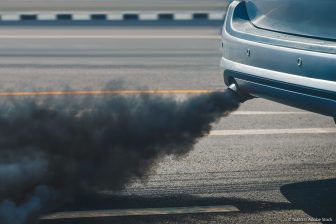
Many UK city high streets have air pollution levels above WHO limits
An alarming three quarters of high streets across the United Kingdom may be exceeding the levels of air pollution recommended by the World Health Organization, says a new study.
GRIDSERVE, a sustainable energy provider, carried out spot checks on the main central street of 25 of the largest cities and towns over a period of two weeks.
It used an air quality measuring device to monitor levels which, particularly through the emissions of vehicles and industry, are known to have hugely debilitating effects on the health and developing bodies of children and young people.
Researchers particularly measured levels of airborne PM2.5 pollutants, which is ‘particulate matter’ that is less than 2.5 micrometres in diameter[iii]. PM is essentially everything in the air that is not gas, and consists of many chemical compounds and materials. They can enter the bloodstream and cause illnesses such as asthma, heart disease and lung cancer.
‘We need to change our behaviours’
The WHO’s recommendation, acknowledged by the Government’s Committee on the Medical Effects of Air Pollutants[iv], is that annual levels of PM2.5 should not exceed 5 micrograms per cubic meter air (µg/m3).
Only six of the 25 high streets in the study recorded an average reading of 5 µg/m3 or lower. Stoke-on-Trent had the highest average level of PM2.5 in the air (11.7), followed by Newcastle (11.5) and Leicester (11.2). Newcastle also registered the highest single reading of 20.5.
Conversely, Glasgow was shown to have the cleanest air with a PM2.5 reading of just 2.2 µg/m3, followed by Edinburgh (2.7). Interestingly, Scotland was the first country in Europe to adopt the WHO recommended limit for PM2.5 in 2016[v].
While no pattern was found regarding whether the high streets were pedestrianised or not, high streets were found to have on average 53 per cent more PM2.5 in the air than the closest park (park average 4.7 µg/m3 compared to high street average 7.2).
Sam Clarke, Chief Vehicle Officer at GRIDSERVE, said: “If we’re to reach the World Health Organisation’s annual target of 5 µg/m3 of PM2.5 in our air, collectively we need to change our behaviours. With vehicle emissions being a key contributor, anything we can do to travel more greenly, from walking more to cycling, and including electric vehicles, is a very valuable set forward to improve the air we breathe daily.”
Click here for more information about the individual towns and cities involved.




